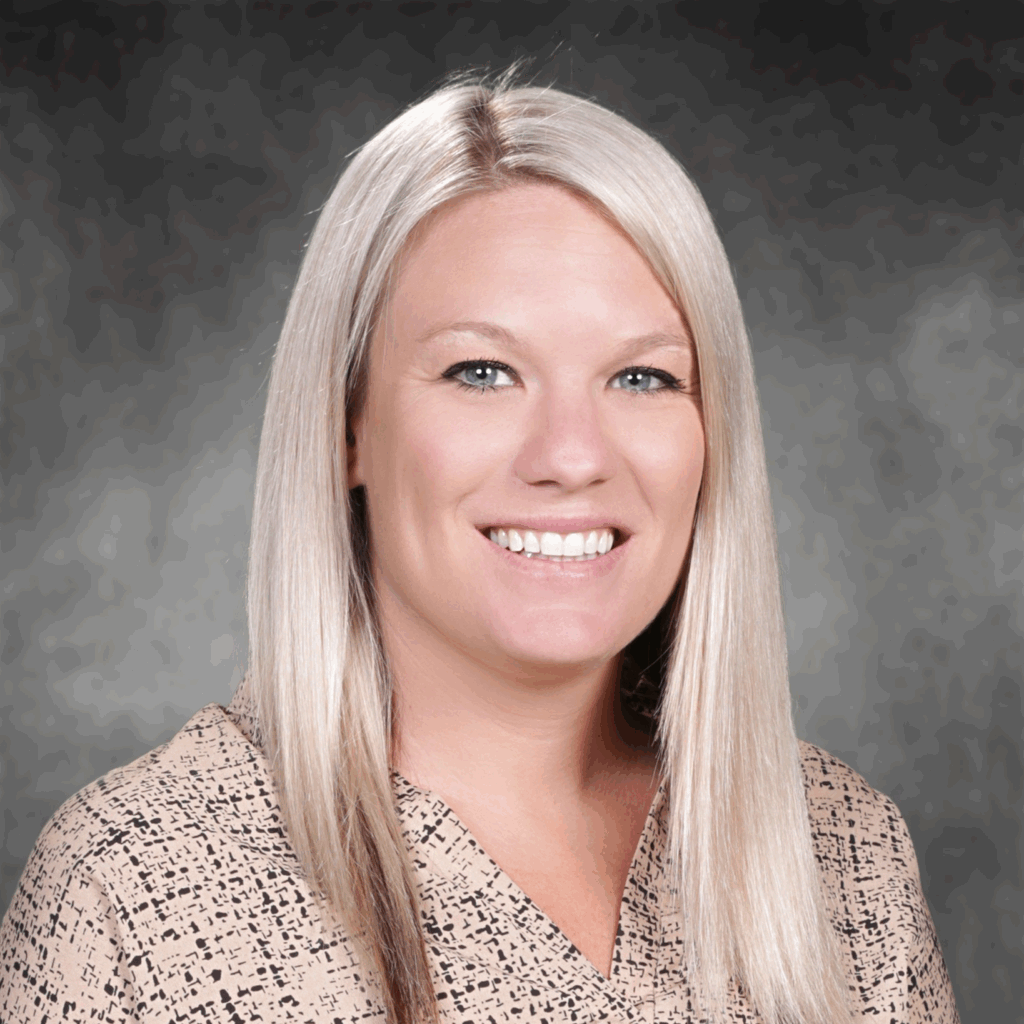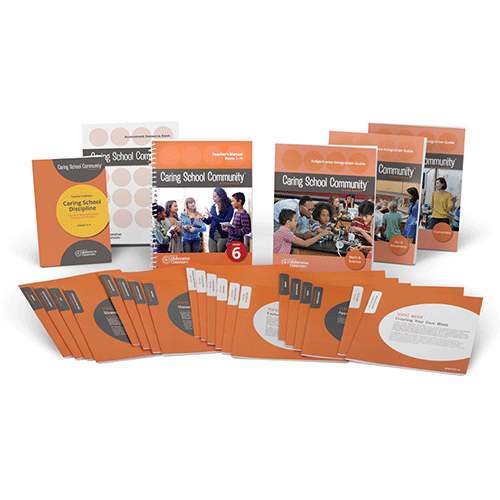
Increased peer communication skills. Greater academic risk-taking and collaboration. Decreased incident reports.
These are all impacts of the Caring School Community program that Circle Cross Ranch K–8 STEM Academy principal Kayla Piel has observed.
In this interview, Ms. Piel shares her experience and the results of implementing the Caring School Community program for grades K–8 at two schools in Arizona’s Florence Unified School District.
How An Annual Culture Survey Helps Measure Growth
Tell us a little about Circle Cross Ranch K–8 STEM Academy. The school began implementing Caring School Community about one year ago.
Circle Cross Ranch is a part of the Florence Unified School District, serving students across Florence, San Tan Valley, and Queen Creek, Arizona.
This last year [2024–20205], when we began implementing Caring School Community, was my first as principal at Circle Cross Ranch. (Although, I actually had some experience with the program at a previous site.)
I can’t speak directly to the 2023–2024 school year at Circle Cross Ranch, but that said, our district is a part of a Johns Hopkins research study in which we conduct a culture survey each year that measures four areas.
I have received the results of the 2024–2025 culture survey [the first year implementing Caring School Community] and I’m also able to look back on previous years, which is great.
For this past year, the results show that school climate, academic climate, social emotional competency, and open classroom climate went up in all areas.

Were there any specific metrics from the survey that you can share?
The scale runs from zero to five, with five meaning that across the board, everything is perfect. So it’s really hard to reach that five!
Comparing the 2023–24 school year to the 2024–25 year:
- The school climate score went from 3.28 to 3.36.
- The academic climate went from 3.36 to 3.58.
For this past year, the results show that school climate, academic climate, social emotional competency, and open classroom climate went up in all areas.
It’s important to note that our students were not surveyed for social-emotional competency; these numbers come from parent, administrator, and teacher data.
Here are some more metrics for the same time period, comparing 2023–24 to 2024–25:
- Social-emotional competency went from 3.44 to 3.56.
- Open classroom climate went from 2.78 to 2.94.
So there was an overall increase in all areas. The school culture survey stakeholders include every parent, every teacher, and every third- through eighth-grade student. Our Parent Teacher Organization parents take it as well.
Implementing a New Program in the Midst of Big Changes
How did your teachers and staff react at first when you first began implementing Caring School Community at Circle Cross during the 2024–25 school year?
Initially, it was a mixed bag of emotions. On top of having a new leadership team, it was my first year as the principal of Circle Cross. I had a brand new Assistant Principal, a new Dean, a new instructional coach, and then our district also rolled out a new math curriculum.
So for many of our teachers, it was just a lot of learning, including new curricula and new leadership styles. And like anything that involves change, there was a little pushback in the beginning.
How did Caring School Community help during this time of intense change and learning?
I found the Caring School Community implementation assessment to be very helpful. For example, if teachers were unhappy with student behavior or student engagement, we would go into their classrooms and use the implementation assessment.
I would walk through the observation tool and then show them the data. They could see the correlation between the results and inadequate Caring School Community implementation.
The implementation assessment was a visual tool to help them understand the connection between their implementation and their class culture not measuring up to expectations. We would do those frequently so they could see the improvement, make the correlation to when they implemented it, and see the positive growth within their class community.
There was real, actionable data, all provided by Caring School Community. I didn’t have to reinvent anything.
Watch a Video Interview with Principal Kayla Piel
Communicating With Parent, Caregiver, and Community Stakeholders
How did you approach rolling out Caring School Community to the other stakeholders—your parents, caregivers, and community members?
We informed parents that we would be using Caring School Community. I know our K–3 teachers were very consistent about including it in their weekly newsletters.
But as I look over the principal package that’s included with the program, I see a lot of things I want to share with parents this next year.
I hate to sound like a broken record, but I became the new principal just last year, replacing the previous principal who served for nine years. Our teachers and our community saw a lot of change with the new leadership team. We don’t want to overwhelm our stakeholders, so we’re taking baby steps. It’s definitely a goal next year to do more community-wide things.
At the same time I’ll add that our primary teachers are so used to communicating—even over-communicating—with parents, that they’ve done a really nice job of taking the program and running with it, and making sure parents are in the loop with what’s going on regarding social-emotional learning. But, we definitely could step it up in the fourth- through sixth-grade category.
How Caring School Community Increased Peer Communication and Conflict Skills
What are some of the changes that you’ve seen in your students since implementing Caring School Community?
Peer communication and conflict skills are so noticeable. I repeatedly hear that these students are able to articulate things that previous year students were not able to do. I think that’s a direct correlation to Caring School Community implementation.
Conflict skills have also improved. When we noticed things weren’t always transferring from setting to setting, we made a point to make sure that all of our specialist educators—such as PE teachers or librarians—were in the loop on what students were learning in Caring School Community. They could then reiterate some of those skills. And we’re seeing more of that transfer across settings.
Peer communication and conflict skills are so noticeable. I repeatedly hear that these students are able to articulate things that previous year students were not able to do.
What do your teachers appreciate about Caring School Community — and how has their approach to classroom management changed?
I think the data results really help. The implementation assessment has been a great tool for teachers to see the correlation. There’s more of a proactive approach versus a reactive approach when they can visualize it themselves.
The leadership team is frequently monitoring our minor incident reports and our referral data trends. We take what we see and share with our teaching teams to help them guide their Caring School Community lessons and what they’re going to do the following week.
How Caring School Community Led to a Decrease in Incident Reports
The last time we spoke, you mentioned data around a huge decrease in incident reports. This was at your previous school, San Tan Heights, where you also implementing Caring School Community. Could you please share about that?
Yes, this really stands out to me. Previously, I was Dean of Students at San Tan Heights Elementary School, K–8. From the 2021–2022 to the 2022–2023 school year, we had an amazing partnership with Great Minds.
They gave us everything: We had math manipulatives, a full math curriculum, perfect professional development for ELA, writing, and math. We had everything across the board, everything the teacher could wish for. Teachers never had to spend a moment at the copier. They could annotate in all their teacher curriculum books.
Every kid had a book in their hand. There was no sharing; it was a teacher’s dream. What we found very quickly that first year was we had this amazing curriculum and this great partnership that also included coaching. But what we were lacking was a sense of community.
So the following year, Great Minds approached us. They strongly encouraged us to throw out the SEL curriculum that we were using at the time. They told us we needed to give Collaborative Classroom [and Caring School Community] a shot. The research was done for us, and they fully backed it. They encouraged us to do it and even paid for it.
That 2022–2023 school year, our Great Minds coaches provided professional development for Caring School Community, and we implemented it at San Tan Heights with fidelity across the board. We had every teacher on campus involved—Special education teachers, paraprofessionals, and principals. It was “all hands on deck.” And it worked.
Comparing my first year at San Tan Heights without Caring School Community to my first year with the program, there was a huge improvement. When we look at quarter one data without Caring School Community and compare to that following year of using Caring School Community with fidelity along with training, there was a 53 percent decrease in referrals.
We saw a huge shift in the culture at San Tan Heights, and I’m excited for this next year here at Circle Cross. There are changes we’ll make along the way. And I think we’ll see a lot of improvement as well.
When we look at quarter one data without Caring School Community and compare to that following year of using Caring School Community with fidelity along with training, there was a 53 percent decrease in referrals.
Academic Growth: “These Kids Are Not Afraid to Take Risks in Their Learning”
Let’s return to your current school, Circle Cross Ranch. Do you see any changes with your students in terms of academics after implementing Caring School Community?
Yes. As a principal, you always want to see a higher growth rate, and we did. We made progress and our students grew the anticipated amount.
One thing we constantly heard from teachers was that it’s so nice that these kids are not afraid to take risks in their learning. They’re answering questions out loud. They’re collaborating with peers outside of their normal friend group. These are things that they weren’t exhibiting in previous years.
Our two kindergarten teachers are amazing. They have both been teaching kindergarten for a decade, and they are constantly raving about Caring School Community and the emotional intelligence the students have developed in such a short time.
Like I said, they’re seasoned teachers. And they’re always talking about that improvement and how quickly these students have adapted to a school setting and are learning to articulate their wants and their needs in a respectful manner.
That isn’t something you’re always seeing in a kindergarten classroom, so that’s been quite a proud moment.
One thing we constantly heard from teachers was that it’s so nice that these kids are not afraid to take risks in their learning. They’re answering questions out loud. They’re collaborating with peers outside of their normal friend group. These are things that they weren’t exhibiting in previous years.
Stakeholder Feedback: Easy to Use, Age-Appropriate, Community-Building
Now that they’ve seen it in action and the student response, how has your teacher and parent/caregiver community responded to what you’ve built a year later?
Overall I think there’s great support across the board. I think it’s an easy curriculum to follow. Even substitutes can come in, pick it up, and for the most part, be able to follow along. One thing that I’ve heard from different stakeholders is that it’s actually age appropriate.
Our district has tried [other] different SEL curriculums over the years, and so often there’s one [program] that works really well for K–2, but fifth and sixth graders have no connection to it, or vice versa.
And so, it’s been nice to have a K–8 curriculum like Caring School Community that’s a one-stop shop. I can have a teacher sub in a different grade level or a specialist teacher come and pick up that class for the day if the teacher is running late. Teachers can step into it and follow the lesson easily.
And to reiterate, it’s age appropriate, which has been really nice. I also love that Caring School Community doesn’t just impact the student community. You’re seeing strength in our adult community as well, and you see that across professional learning communities.
I also love that Caring School Community doesn’t just impact the student community. You’re seeing strength in our adult community as well.
In every staff meeting we’re adapting and using Caring School Community community builders activities, for instance — those that are in the principal package.
We’ve modified where needed, to keep the culture consistent with the teachers and the staff and align with what they’re seeing in the classroom.
Final Thoughts for Implementation Success
What thoughts or insights would you share with another school or another district that might be considering Caring School Community?
As a leader, the fact that it’s easy to follow and is age-appropriate is a win for me. It’s not something that’s overly challenging for a teacher to take on. Yes, it takes planning, but it’s not going to suck up all their time.
As a leader, the fact that it’s easy to follow and is age-appropriate is a win for me.
I appreciate that it’s interactive. I learned very quickly that if you’re entering a classroom and you see a teacher leading Caring School Community time, then it’s not being done right. It’s not top down. It should be very interactive for our students.
One thing I would alert any leader to is the fact that we need to account for those kids that come mid-year. We’ve planned for and account for those kids here at Circle Cross. But I noticed at San Tan Heights when we were doing Caring School Community and had developed this great community, when a new student would join in the middle of the year, they just didn’t feel connected.
So if you’re implementing this as a first year, know that you need to account for those kiddos. If you give a little extra to make sure newcomers feel included in the circles and in the community, then it’s going to be great!
Related:
Oregon Spotlight: How Mountain View Elementary Created a Thriving Learning Community
How Sierra Nevada Is Reducing Disciplinary Reports with Caring School Community

Get Caring School Community Sample Lessons
Download sample teacher’s and principal’s packages for grades K–8.
